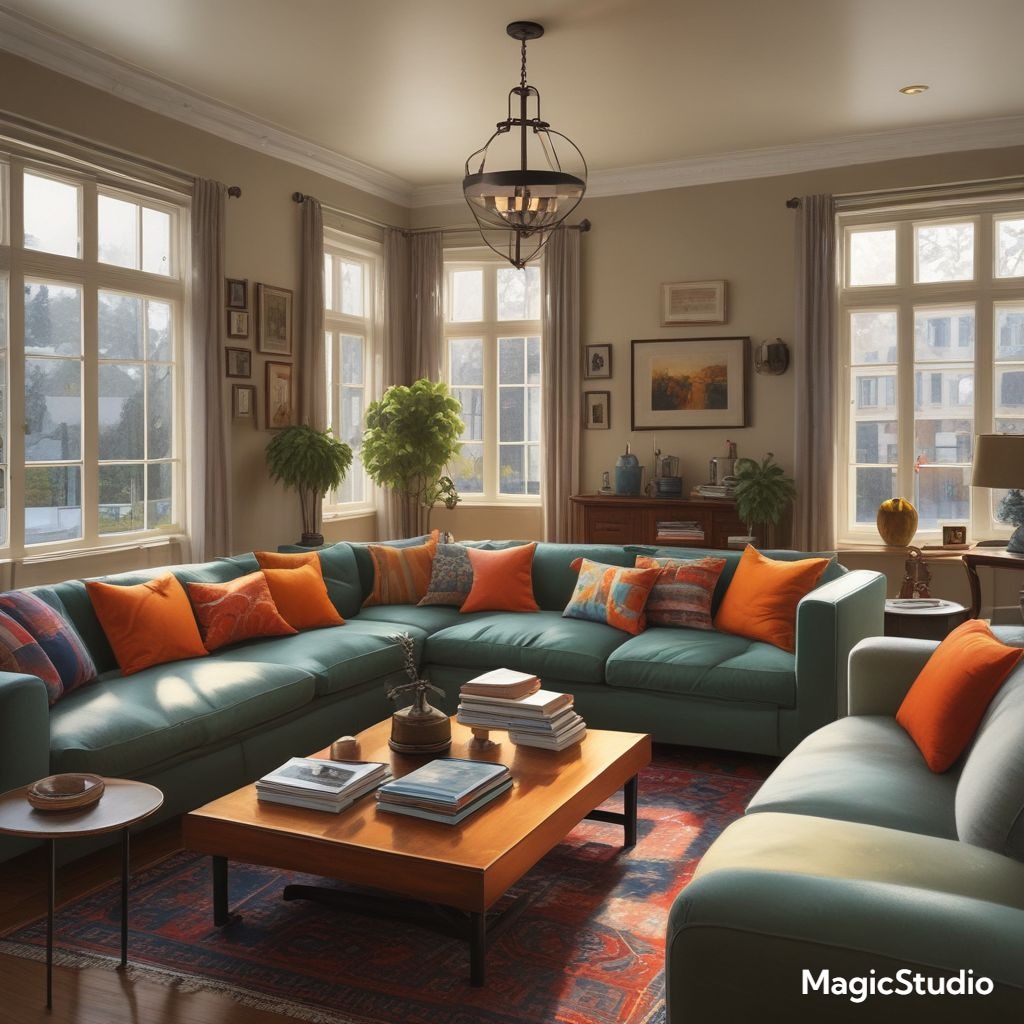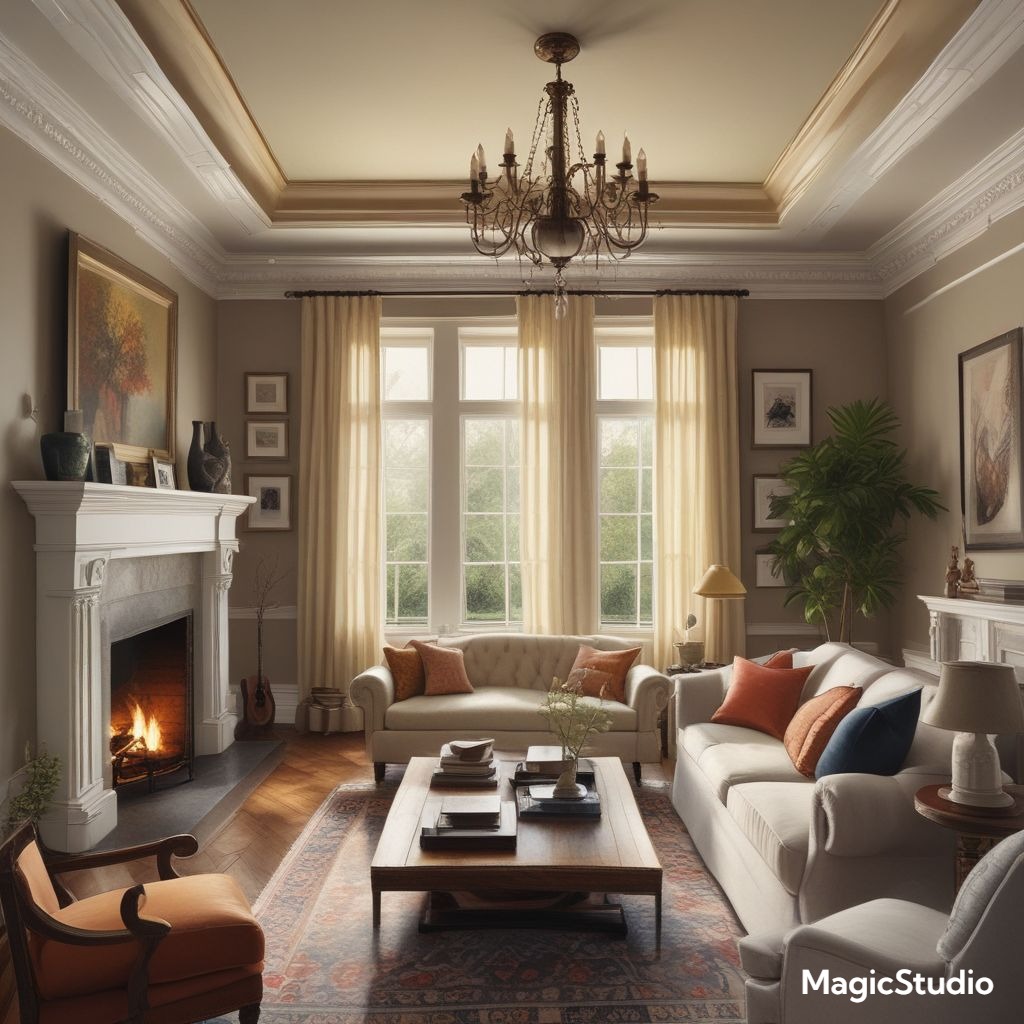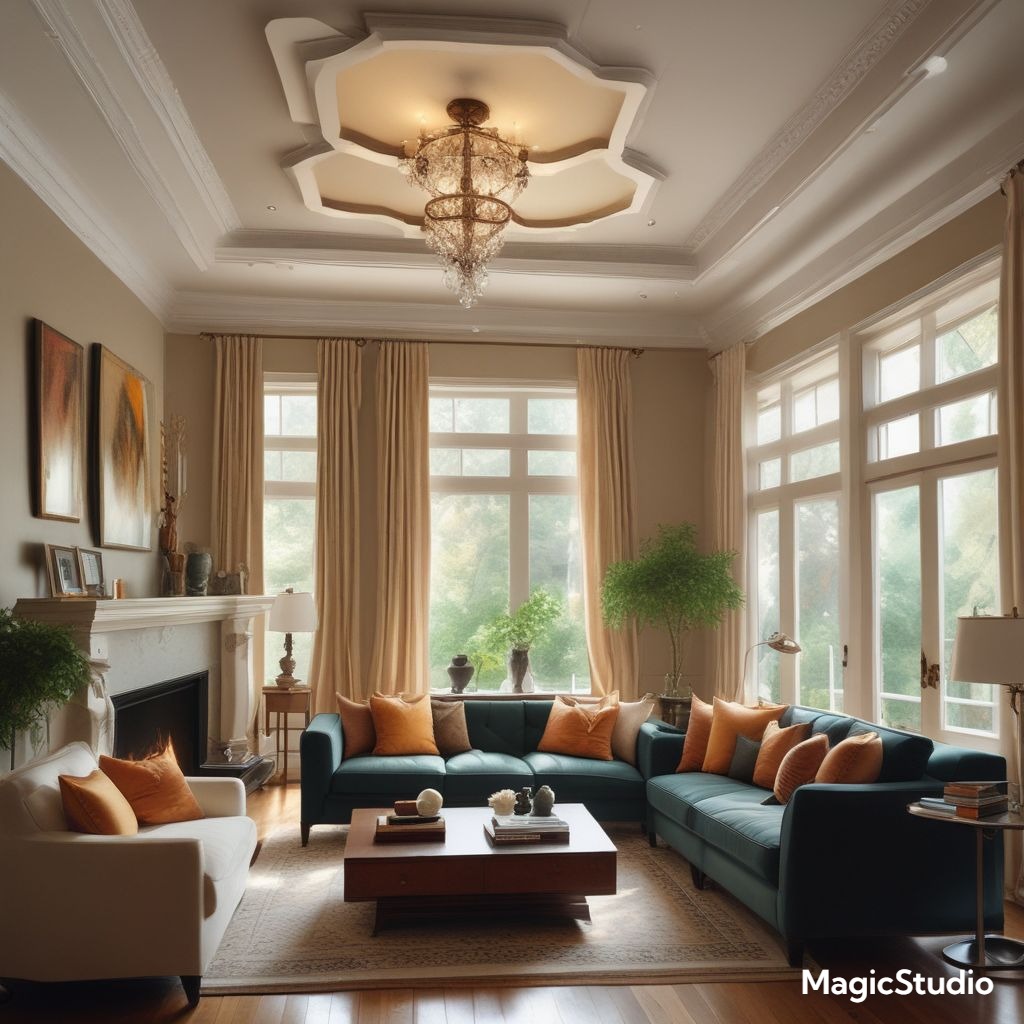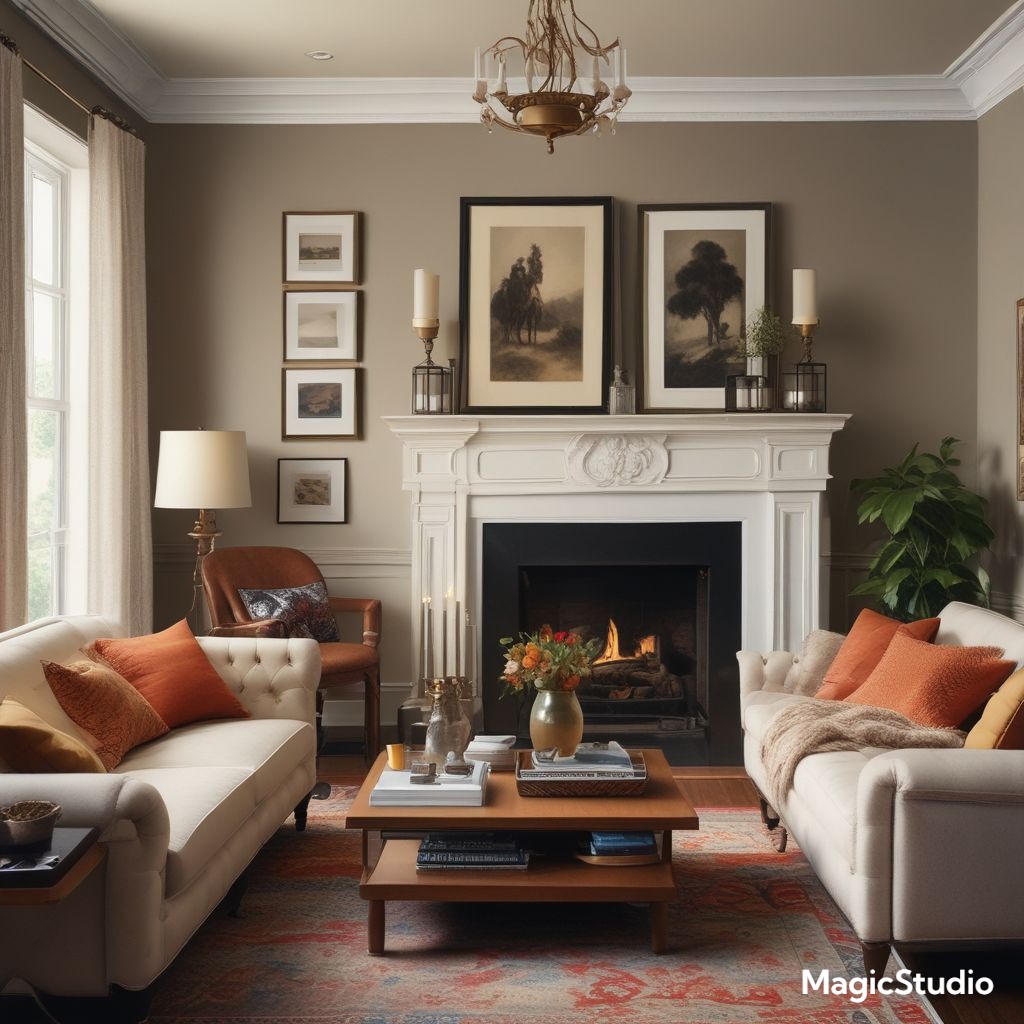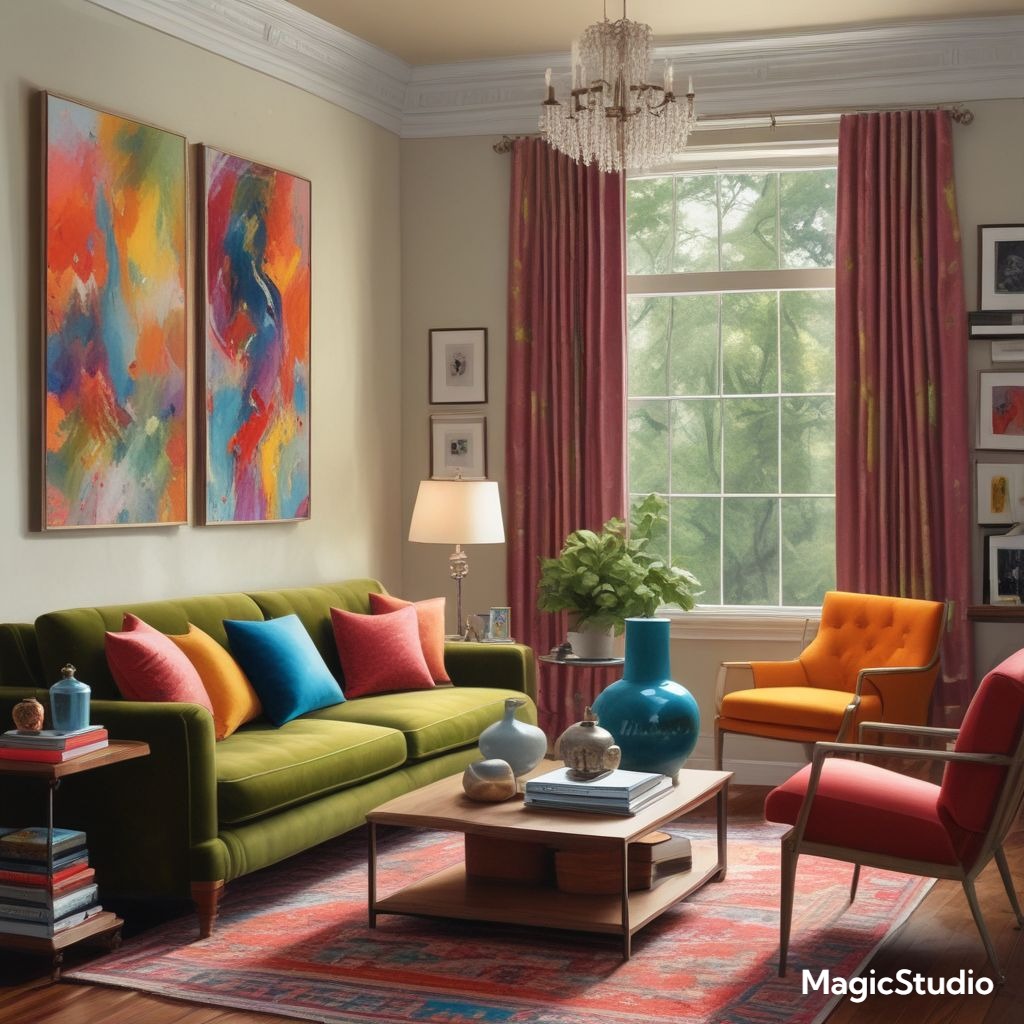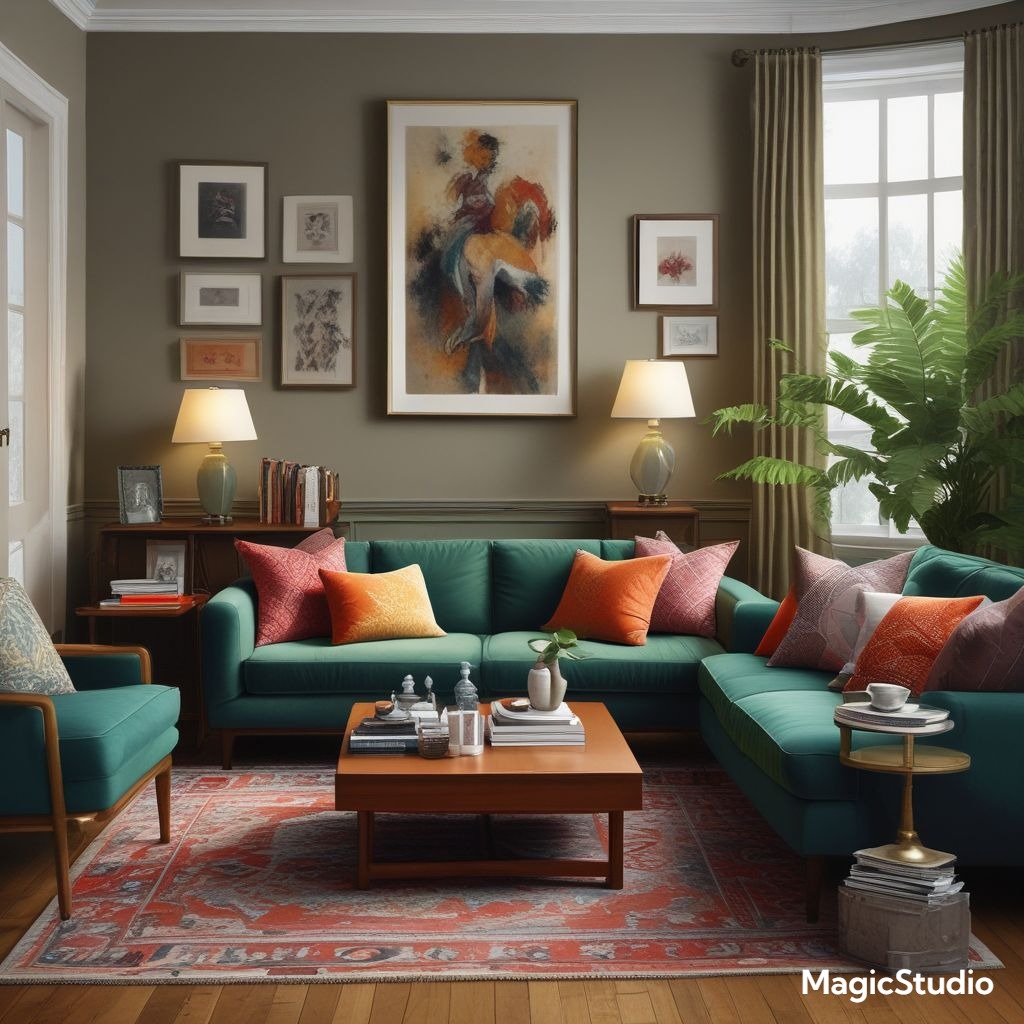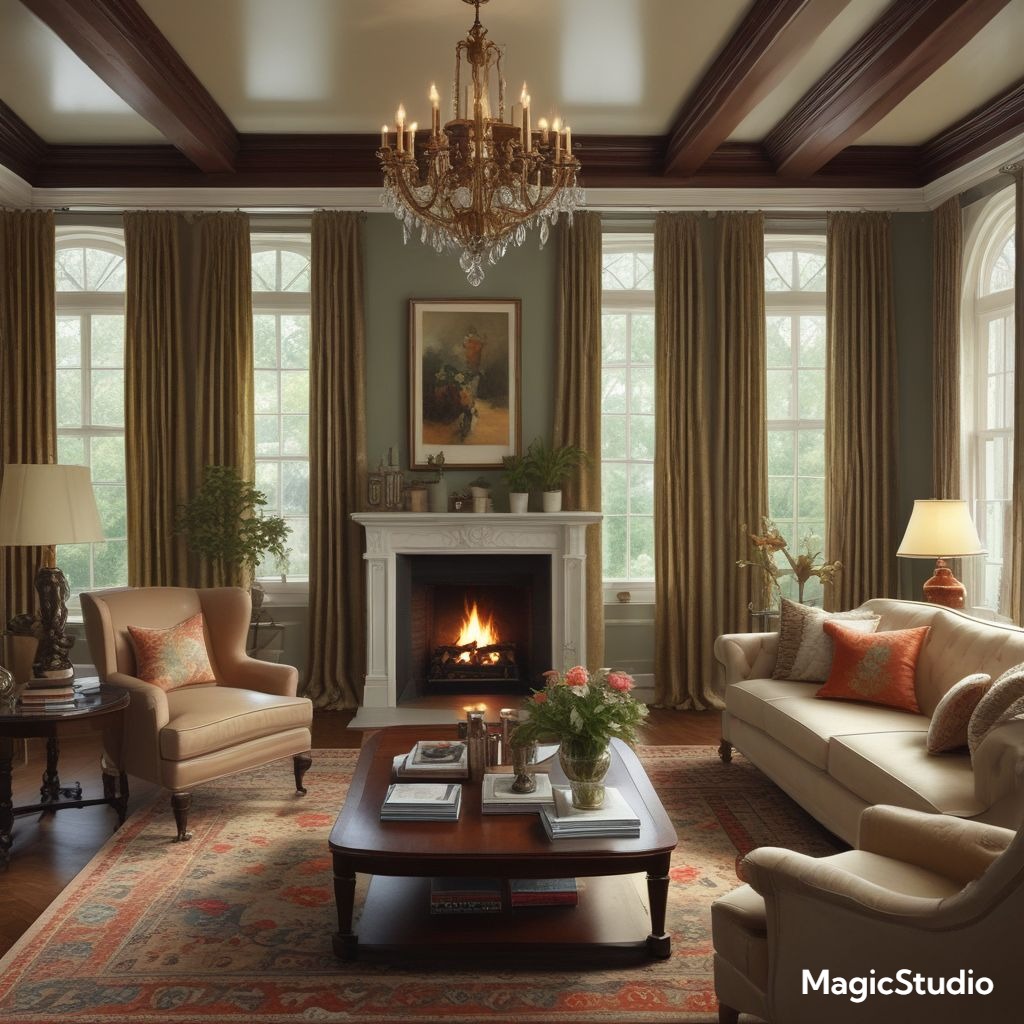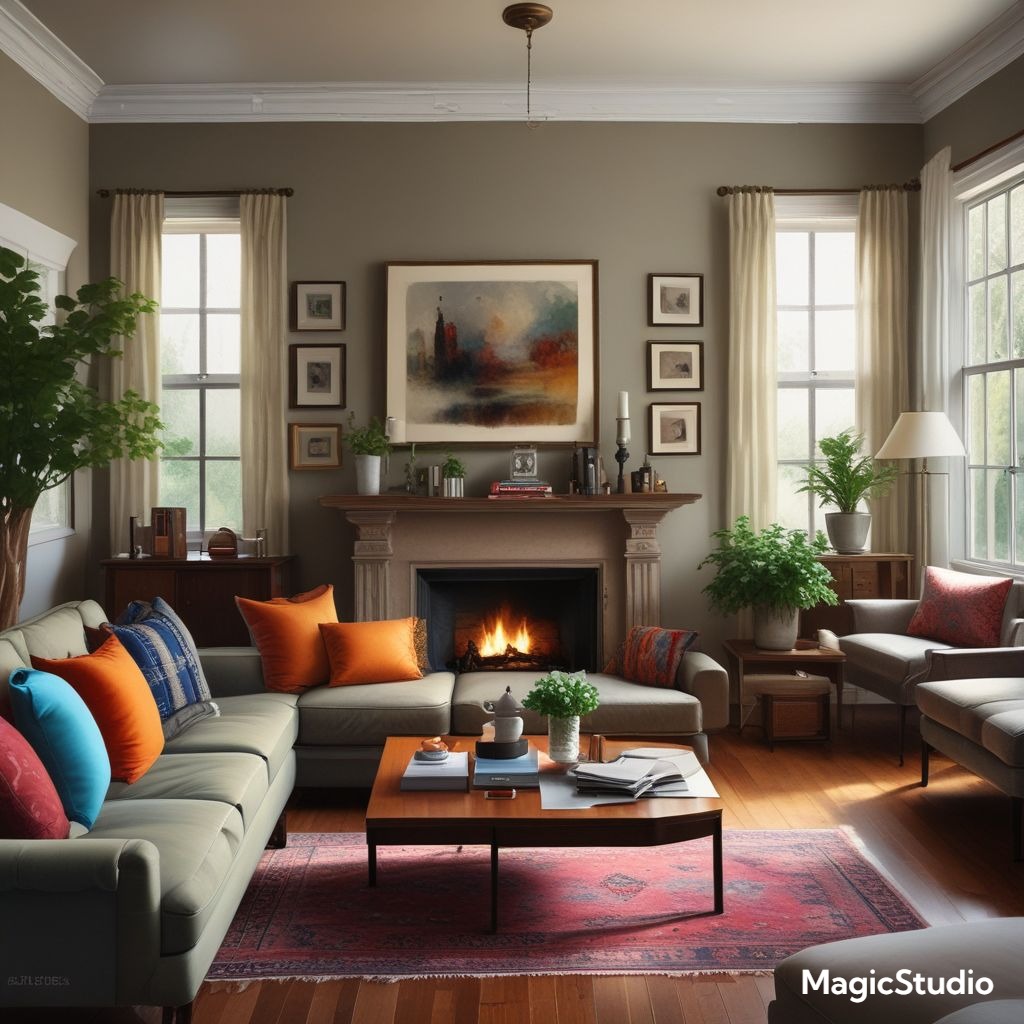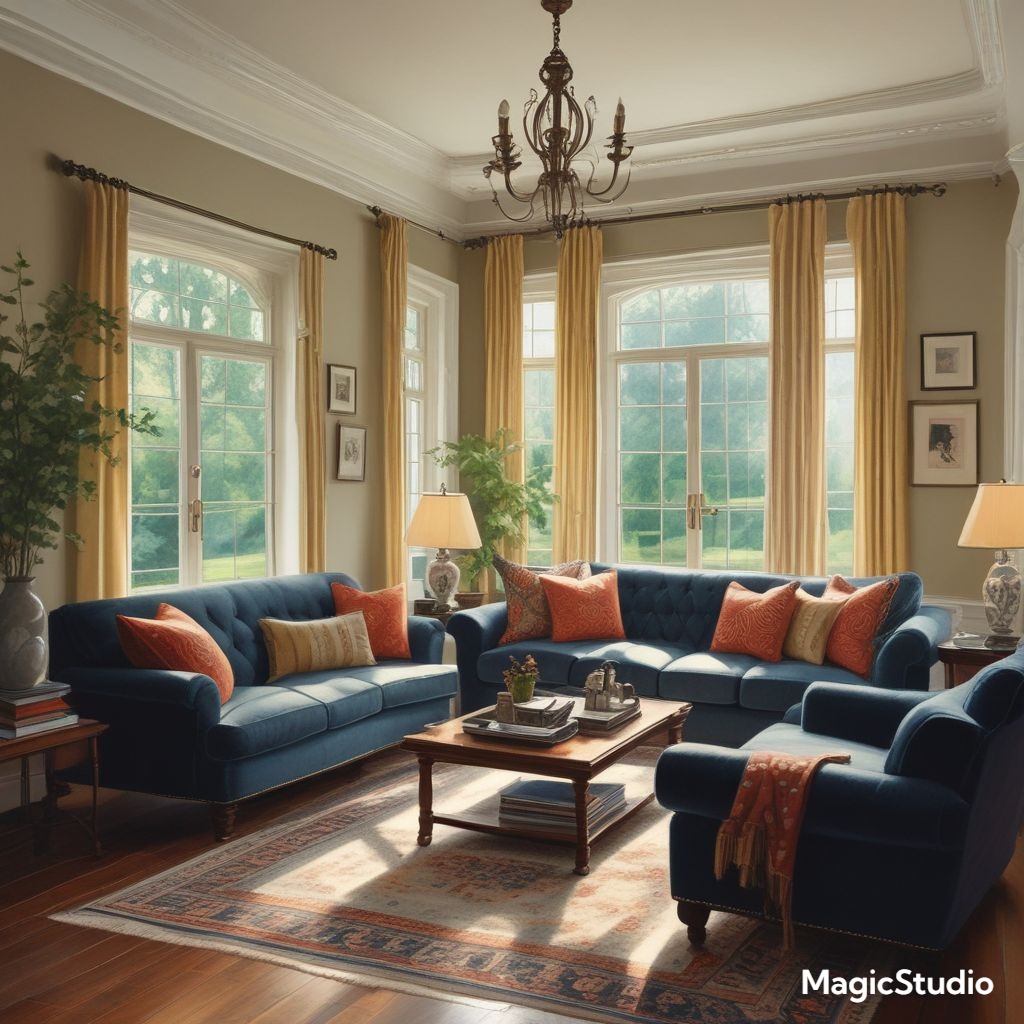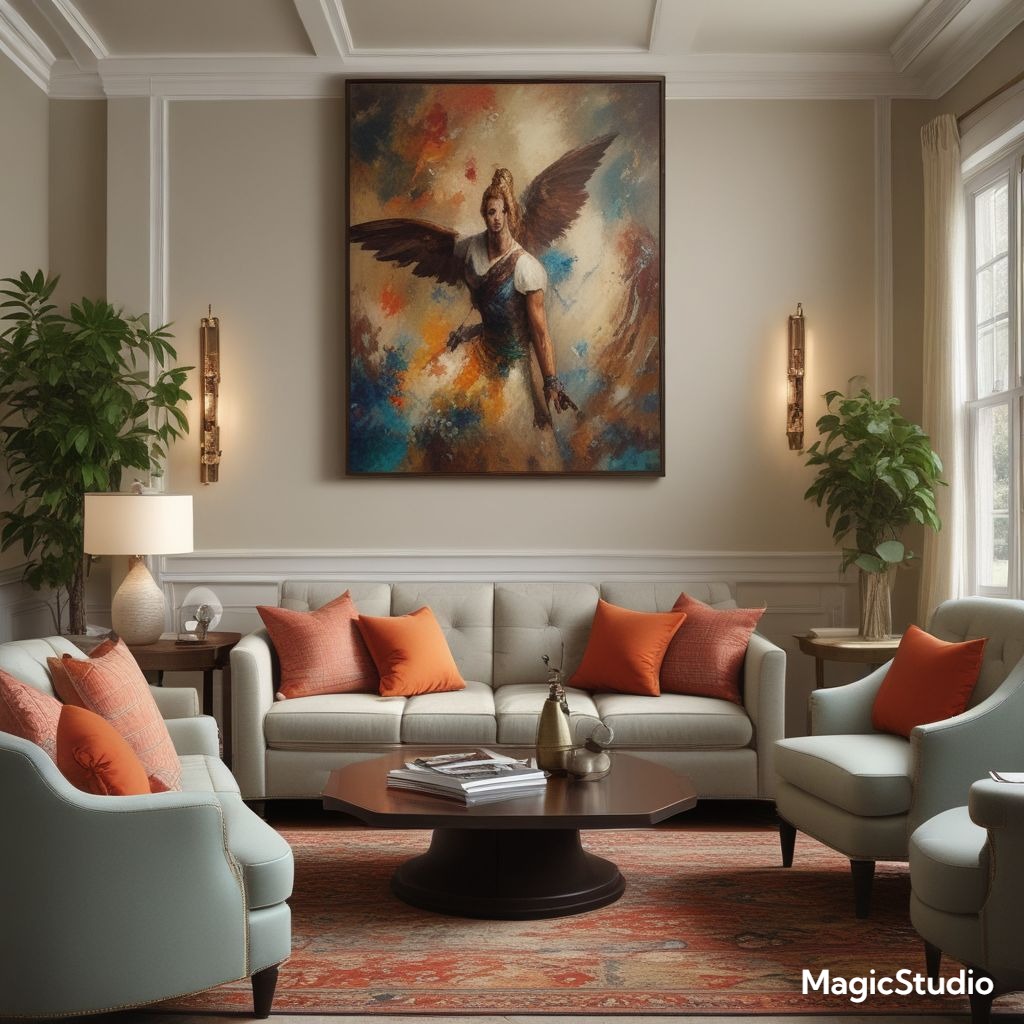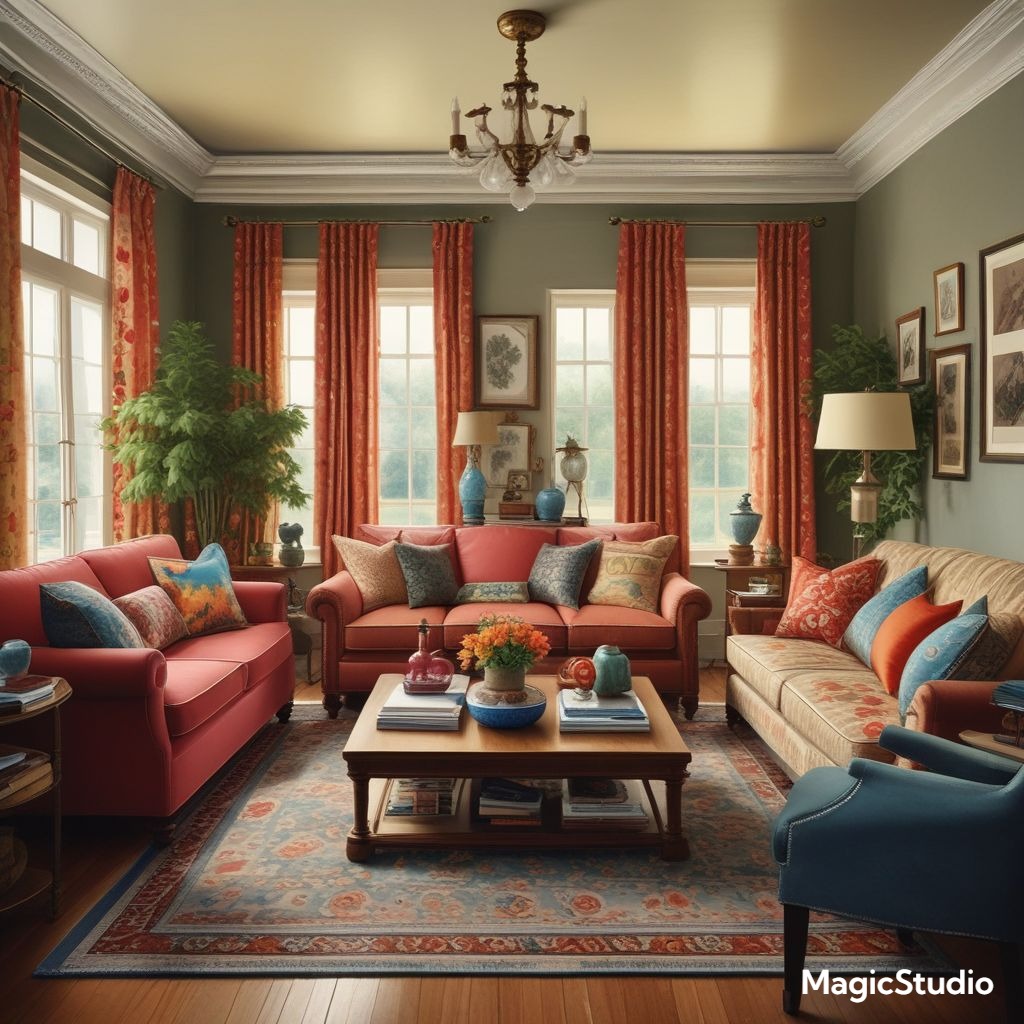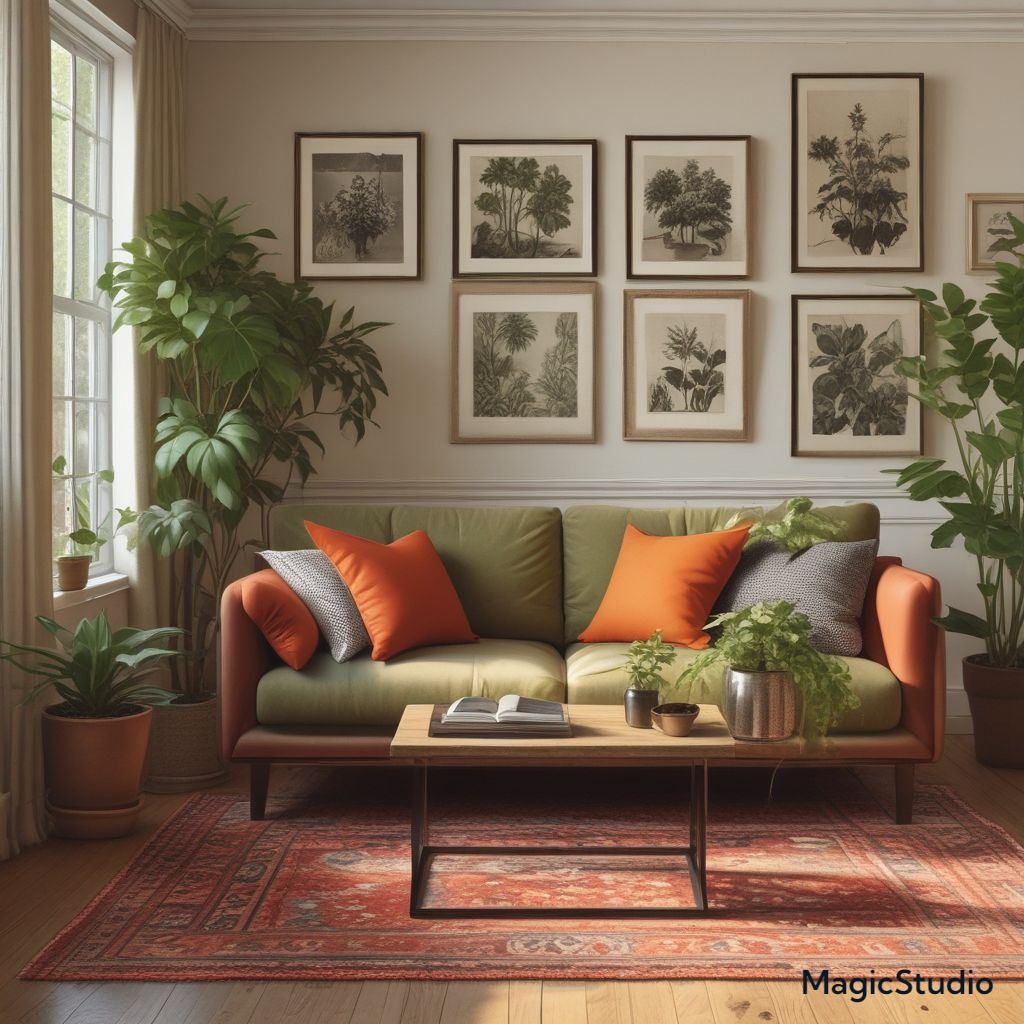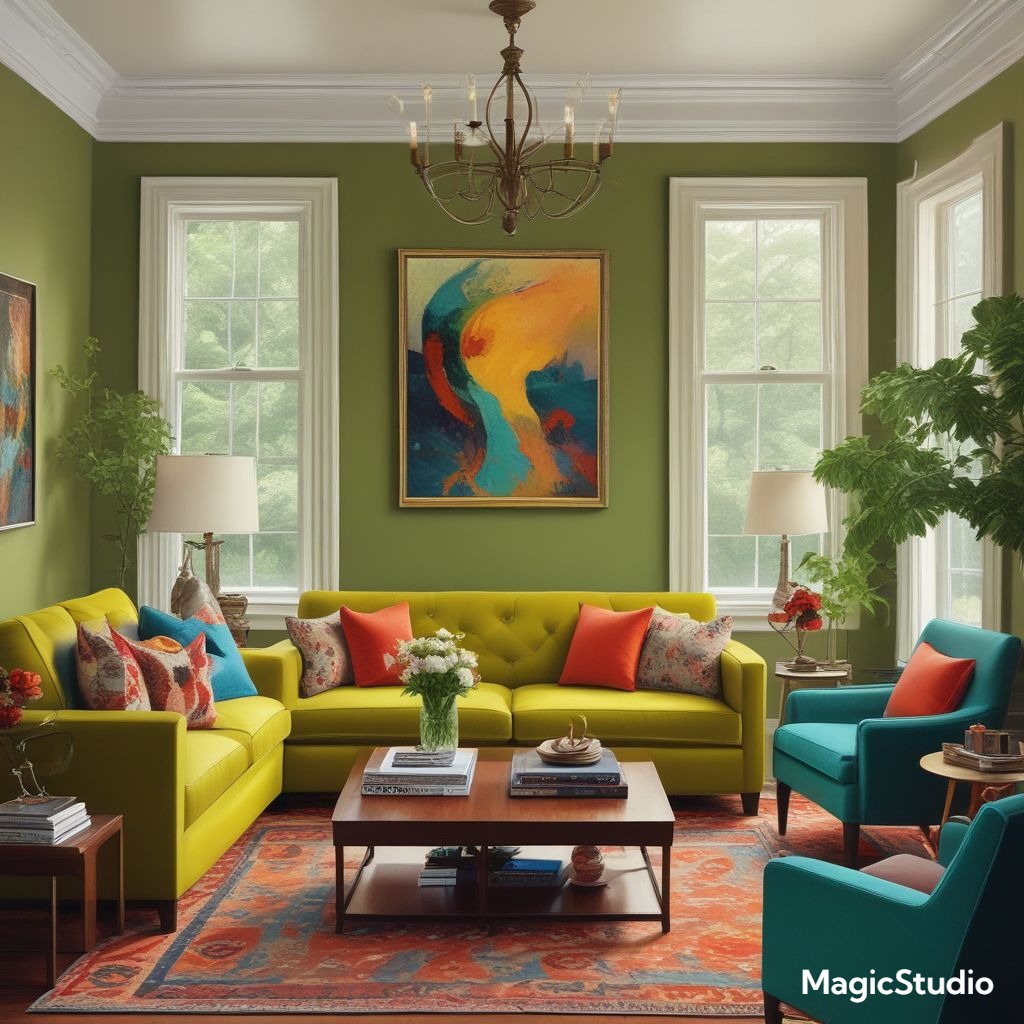Your living room is the heart of your home, a space for relaxation, entertainment, and creating memories. It’s also a blank canvas for expressing your personal style. But even with the best intentions, common decorating mistakes can easily derail your vision. From choosing the wrong furniture to neglecting lighting, these missteps can leave your living room feeling cluttered, cramped, or simply lacking that “wow” factor. Fear not, for we’ve compiled a list of 24 design ideas to help you avoid these pitfalls and create a living room you’ll absolutely adore.
Ignoring the Flow of Traffic
Before you even start picking paint colors, take a critical look at the layout of your living room. Is there a clear path for walking through the space, or does furniture block the flow of traffic? A cluttered pathway can make your room feel cramped and unwelcoming. The latest trend in the US and EU leans towards open floor plans and minimalist furniture arrangements, allowing for easy movement and a sense of spaciousness.
Consider using furniture with a smaller footprint, like sleek sofas with low profiles and chairs with slender legs. This can create a more airy feel. Also, avoid placing furniture directly in front of doorways or windows, as this can create visual clutter and disrupt the flow of the room.
Forgetting About Scale
Oversized furniture can dominate a small living room, making it feel even smaller. Conversely, dainty furniture can get lost in a large space. To achieve visual balance, consider the scale of your furniture relative to the size of your room. The current trend in both US and EU interior design focuses on using a combination of different sizes to create visual interest. For example, a large, statement sofa can be balanced by smaller accent chairs or a coffee table with a minimalist design.
Remember to think about the proportions of your furniture pieces in relation to one another. Don’t be afraid to mix and match different styles and sizes, as long as they complement each other. And if you’re working with a small space, consider using multi-functional furniture pieces, such as a sofa bed or a coffee table with storage, to maximize functionality without sacrificing style.
Ignoring the Power of Lighting
Lighting is a crucial element in setting the mood and ambiance of your living room. Too much overhead lighting can create a harsh and sterile feel, while insufficient lighting can make the room feel gloomy and uninviting. The latest trends in US and EU design emphasize layered lighting, combining ambient, task, and accent lighting to create a warm and inviting atmosphere.
Start with ambient lighting, provided by overhead fixtures or lamps placed throughout the room, to create a general illumination. Next, add task lighting, like lamps positioned near reading areas or workspaces, for focused illumination. Finally, accent lighting, such as spotlights or sconces, can highlight artwork, architectural features, or decorative elements, adding depth and visual interest to your living room.
Neglecting the Ceiling
Often overlooked, the ceiling plays a significant role in defining the overall look and feel of your living room. A plain white ceiling can make the space feel flat and uninspiring. In contrast, a textured or painted ceiling can add visual interest and create a more dramatic effect. The current trend in US and EU interior design is towards adding visual interest to ceilings, with textured finishes, wallpaper, and even bold colors becoming popular choices.
Consider using wallpaper with a subtle pattern or adding moldings for a classic look. If you’re feeling adventurous, try painting the ceiling a darker shade than the walls to create a more intimate and cozy atmosphere. Alternatively, a lighter shade can make the room feel taller and more expansive.
Ignoring the Walls
The walls of your living room offer a prime opportunity to express your personality and style. Don’t settle for plain white walls when you can create a backdrop that truly reflects your taste. The latest trends in US and EU interior design are all about using walls to create visual interest.
Think beyond traditional paint colors. Consider adding accent walls in bold hues or using wallpaper with striking patterns. You can also incorporate artwork, tapestries, or even mirrors to break up the monotony and create visual focal points. Remember to choose art that reflects your personal style and complements the existing décor. Experiment with different layouts and arrangements until you find a configuration that feels balanced and cohesive.
Overlooking the Power of Color
Color is one of the most powerful tools in interior design, with the ability to transform the mood and ambiance of a space. Choosing the right color palette is crucial for creating a cohesive and inviting living room. Current trends in both US and EU design emphasize the use of neutral base colors, such as white, gray, or beige, to create a sense of calm and serenity.
Then, add pops of color through accent pieces, artwork, or throw pillows. The key is to create a balanced and harmonious look, using color to accentuate the room’s features and enhance its overall aesthetic. For a modern look, consider incorporating rich jewel tones, like emerald green or sapphire blue. For a more traditional vibe, stick with warm earthy tones like terracotta or burnt orange.
Choosing the Wrong Furniture
The furniture you choose plays a crucial role in defining the style and functionality of your living room. Avoid generic furniture that lacks character and focus on pieces that reflect your personal taste and fit your lifestyle. The current trend in US and EU design is towards a blend of modern and traditional styles, with a focus on comfort and functionality.
If you love classic elegance, consider a Chesterfield sofa or wingback chairs. For a more contemporary look, opt for sleek, minimalist furniture with clean lines. Consider the specific needs of your family and prioritize pieces that offer both comfort and style. For example, a sectional sofa can be ideal for large families, while a small loveseat might be more suitable for a cozy reading nook.
Skipping on Textiles
Textiles play a vital role in adding warmth, texture, and personality to your living room. From plush rugs to soft throw blankets, textiles can elevate the overall feel of your space. The latest trend in US and EU design emphasizes using natural materials, such as wool, linen, and cotton, which provide a sense of warmth and comfort.
Don’t be afraid to experiment with different textures and patterns to add visual interest and depth to your living room. For a cohesive look, choose textiles that complement the colors and patterns used in your furniture and artwork. For example, a patterned rug can be a great way to add visual interest to a neutral sofa. Throw pillows in contrasting colors and textures can add a touch of personality and comfort to your living room.
Ignoring the Details
It’s the little details that make a big difference in interior design. Don’t overlook the power of small touches that can add personality and sophistication to your living room. The latest trend in both US and EU design emphasizes using small accents to personalize spaces and create unique looks.
Consider adding plants to bring a touch of nature indoors. Choose decorative objects that reflect your interests, such as travel souvenirs, vintage books, or family photos. Don’t forget the power of art and choose pieces that spark joy and inspire conversation. Even small details, such as stylish throw pillows, unique coffee table books, or framed prints, can make a big impact.
Cluttering Your Space
Clutter is a common decorating mistake that can make your living room feel cramped and chaotic. To create a serene and inviting atmosphere, it’s essential to declutter your space and only keep items that spark joy. The latest trend in both US and EU design focuses on minimizing clutter and prioritizing functionality.
Find a place for everything, whether it’s storing books in a bookshelf or organizing magazines in a decorative basket. Keep surfaces clear of unnecessary items and declutter regularly to avoid build-up. A clutter-free living room feels more spacious, relaxing, and inviting.
Choosing the Wrong Color for Your Walls
The color you choose for your walls can make a huge difference in the overall feel of your living room. If you choose a color that’s too dark, it can make the room feel cramped and gloomy. If you choose a color that’s too light, it can make the room feel sterile and uninviting. The latest trends in US and EU design focus on using neutral base colors that create a calming and versatile backdrop for the rest of the décor.
Choose a color that complements your furniture and artwork, and that will create the mood you’re aiming for. For example, if you want a calming and relaxing space, you might choose a light blue or green. If you want a more vibrant and energetic space, you might choose a bolder color like yellow or orange.
Forgetting About Personal Touches
It’s important to personalize your living room to make it feel like your own. Don’t be afraid to add your own personal touches to the space. This could include adding family photos, travel souvenirs, or artwork that reflects your interests. The latest trends in both US and EU design emphasize creating personalized spaces that reflect the individual’s style and personality.
The goal is to create a space that feels welcoming and inviting, and that reflects your unique personality. You want your living room to be a place where you feel comfortable and relaxed, and that reflects your personal style. So, don’t be afraid to experiment and add your own touches to the space.
Ignoring the Power of Art
Art can add personality, color, and visual interest to a living room. Choose artwork that you love and that reflects your style. Consider hanging a large piece over the fireplace or sofa, or grouping several smaller pieces together on a wall. Current trends in US and EU design embrace a variety of styles, from abstract to figurative, and encourage incorporating art that speaks to the individual’s taste.
Don’t be afraid to experiment with different styles and arrangements until you find a configuration that feels balanced and cohesive. Art can be a great way to add personality and a touch of color to a neutral living room.
Choosing the Wrong Rug
The right rug can tie a living room together and create a sense of unity. The rug should be large enough to anchor the furniture, and it should complement the colors and patterns of the other elements in the room. The latest trends in US and EU design focus on using rugs to define spaces, add visual interest, and create a sense of warmth and comfort.
If you have a small living room, choose a rug with a light color or pattern to make the space feel larger. If you have a large living room, choose a rug with a darker color or pattern to create a sense of intimacy. Consider using an area rug to define different seating areas or to create a sense of separation in an open floor plan.
Overlooking the Importance of Comfort
Your living room should be a comfortable and inviting space. Make sure your furniture is comfortable to sit and relax on. The latest trends in US and EU design prioritize comfort and functionality, with furniture that is both stylish and practical.
Consider adding soft throw blankets and pillows to your seating areas, and choose furniture that is well-supported and easy to relax on. A comfortable living room is a place where you can truly unwind and enjoy yourself.
Choosing the Wrong Coffee Table
The coffee table is the centerpiece of a living room, and it should be both functional and stylish. The latest trends in US and EU design focus on using coffee tables to create a sense of visual interest and to serve as a focal point for the room.
Choose a coffee table that complements the style of your other furniture, and that is large enough to accommodate drinks, snacks, and books. Consider using a coffee table with storage to keep your living room clutter-free.
Using Too Many Patterns
Using too many patterns can make a living room feel overwhelming and chaotic. Choose a few key patterns and use them sparingly. The latest trends in US and EU design focus on using patterns to add visual interest and depth to a space, while maintaining a sense of balance and harmony.
For example, you could use a patterned rug, a patterned sofa, and a few patterned throw pillows. Avoid using too many different patterns, as this can make the room feel too busy and cluttered. A balanced approach is key to creating a cohesive and stylish look.
Forgetting About Plants
Plants can add life, color, and texture to a living room. Choose plants that are easy to care for and that complement the style of your room. The latest trends in US and EU design emphasize incorporating greenery into the home to create a sense of tranquility and bring the outdoors in.
If you have limited natural light, choose low-light plants. If you have a lot of natural light, choose plants that thrive in sunny conditions. Consider adding plants to different levels of your living room, such as on coffee tables, bookshelves, or side tables. Plants can add a touch of nature and personality to your living room.
Overusing Bold Colors
While bold colors can add personality and vibrancy to a space, using too many of them can be overwhelming. The latest trends in US and EU design encourage incorporating bold colors in a strategic and balanced way, often using them as accent colors to complement a neutral color palette.
Choose one or two bold colors to use as accents and keep the rest of your décor neutral. For example, you could use a bright yellow accent wall or a few brightly colored throw pillows. This way, you can add pops of color without overwhelming the space.

